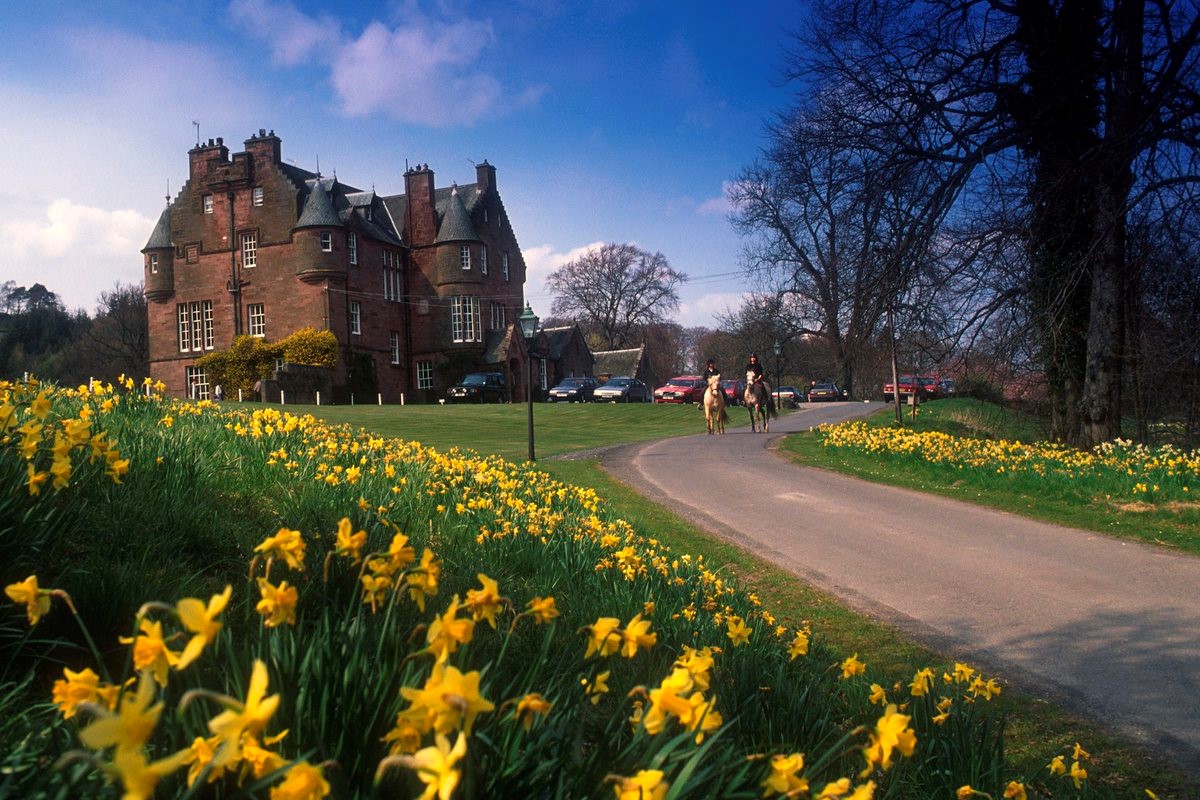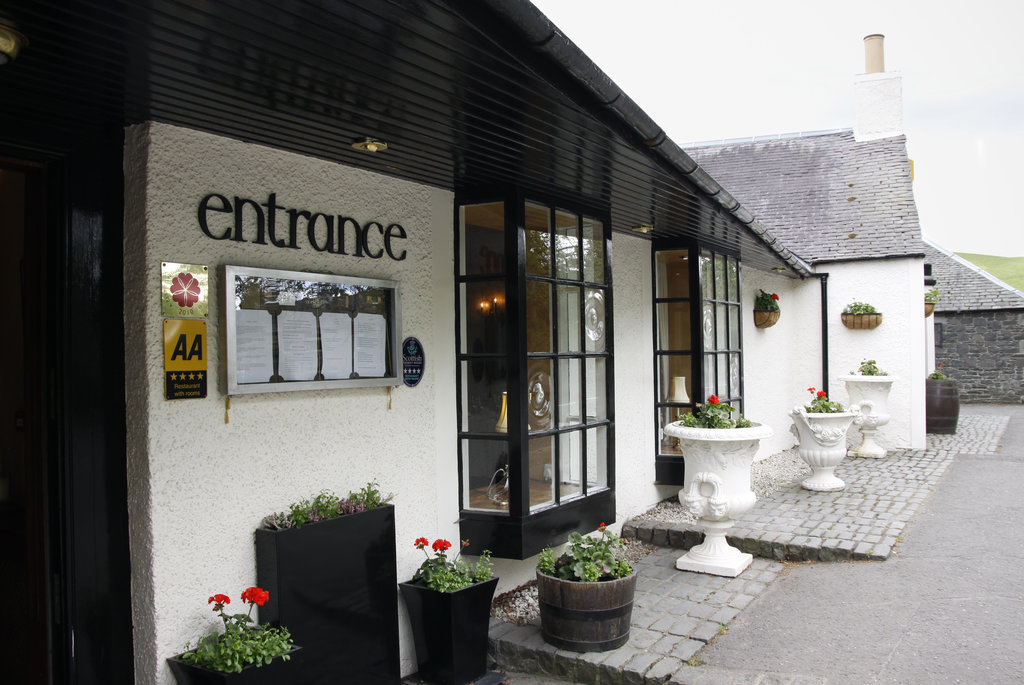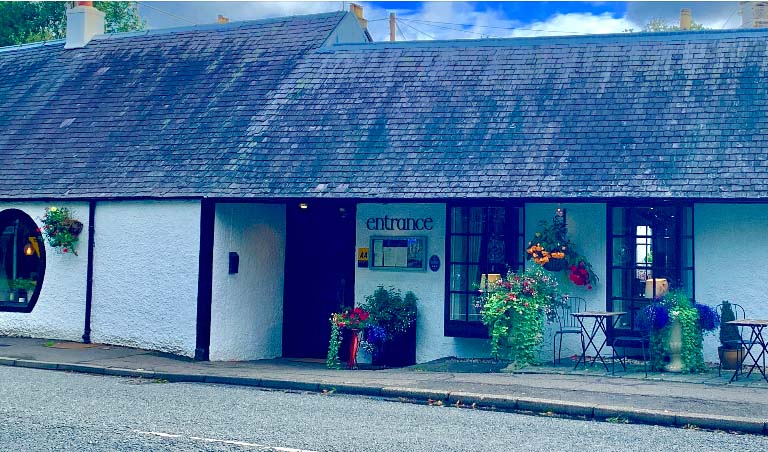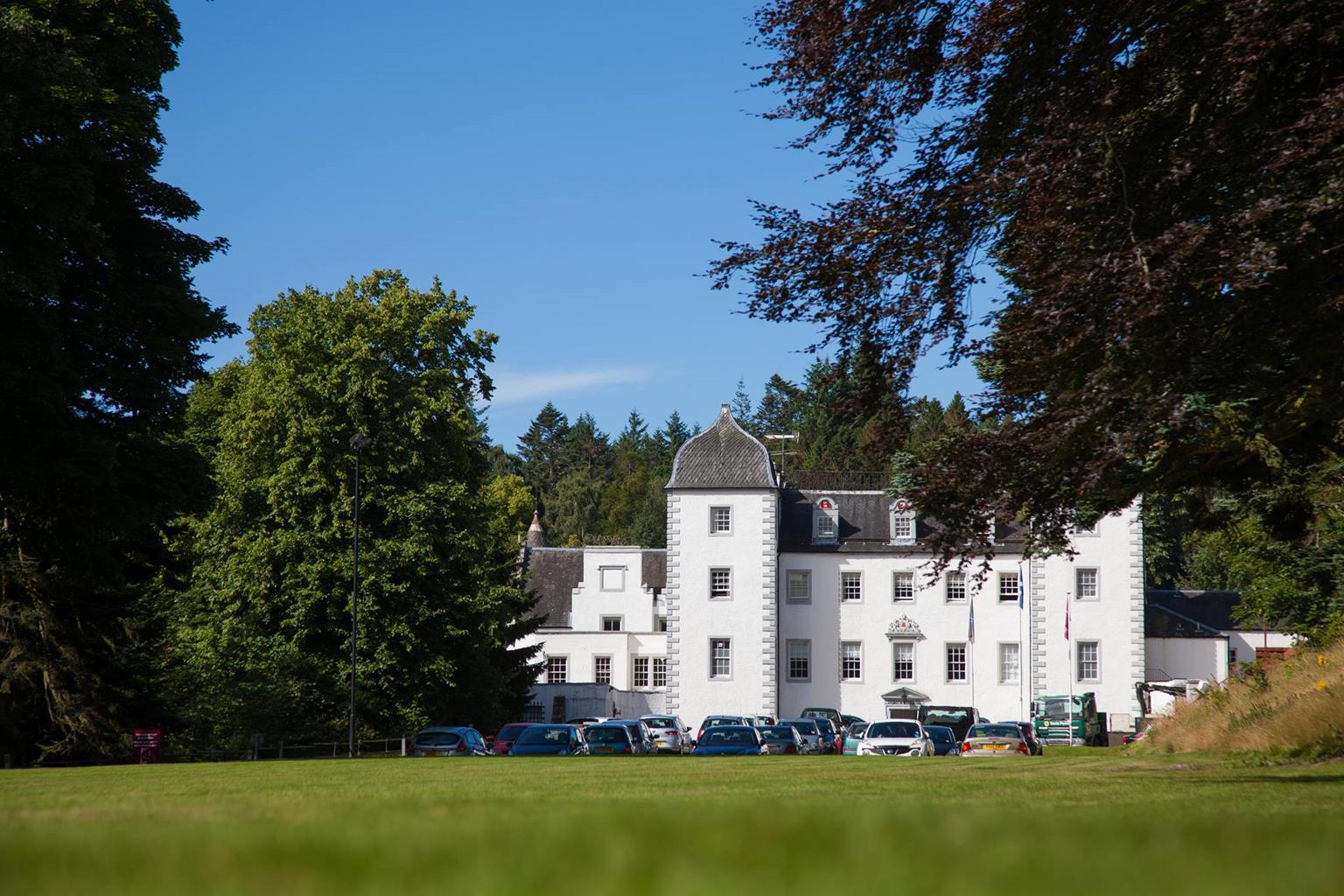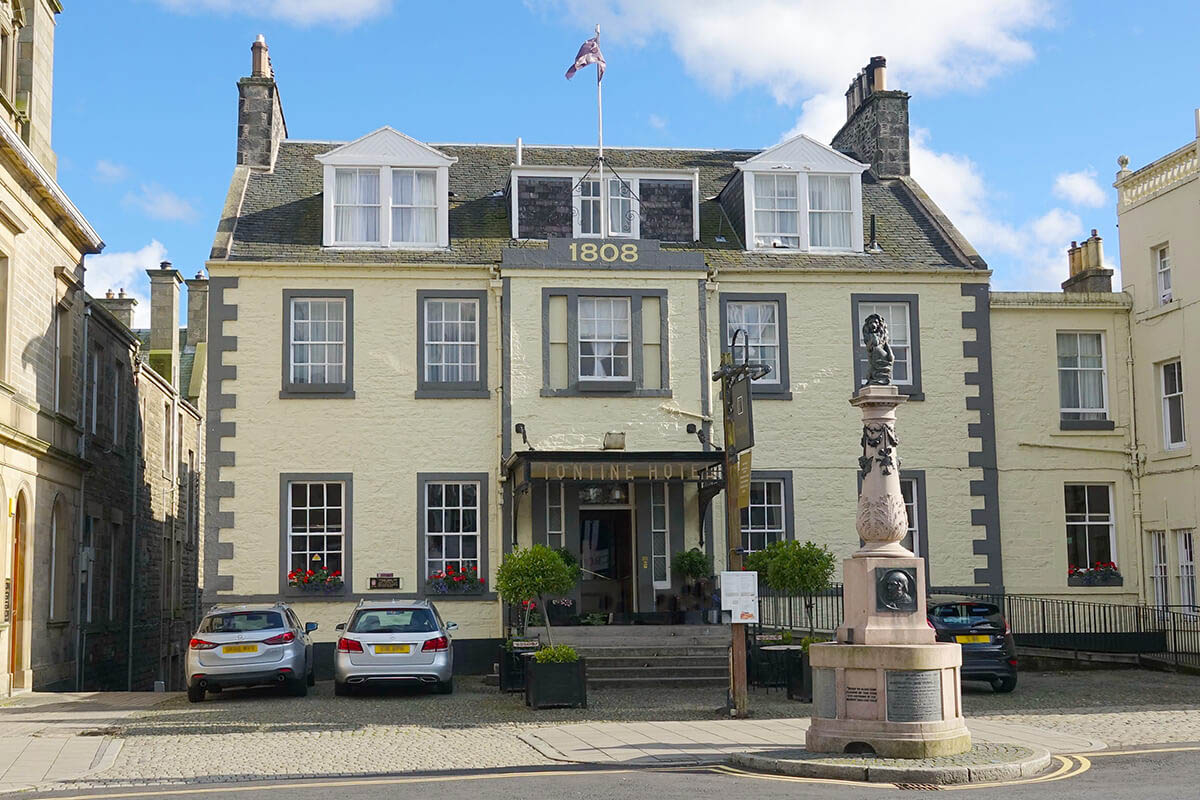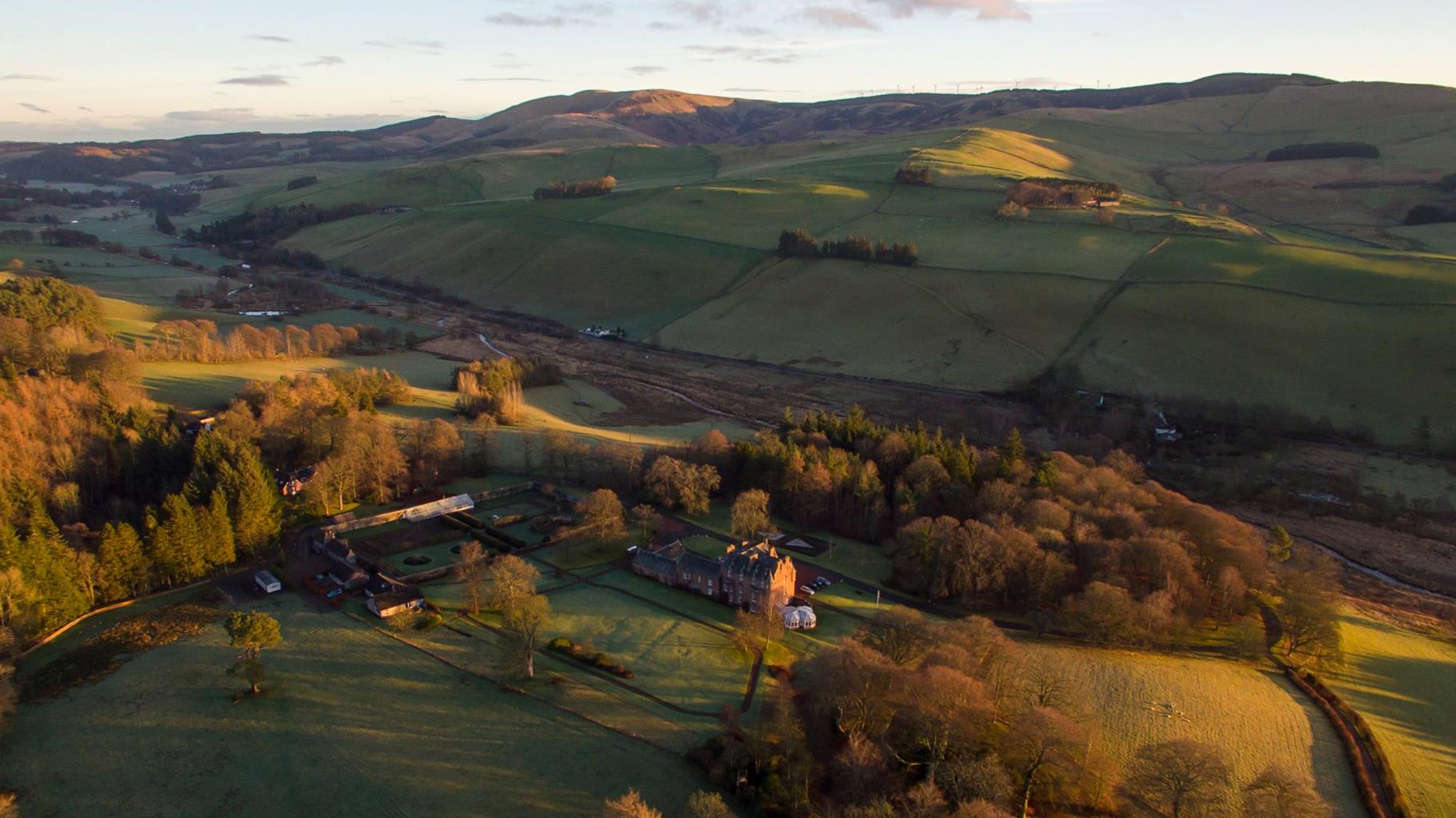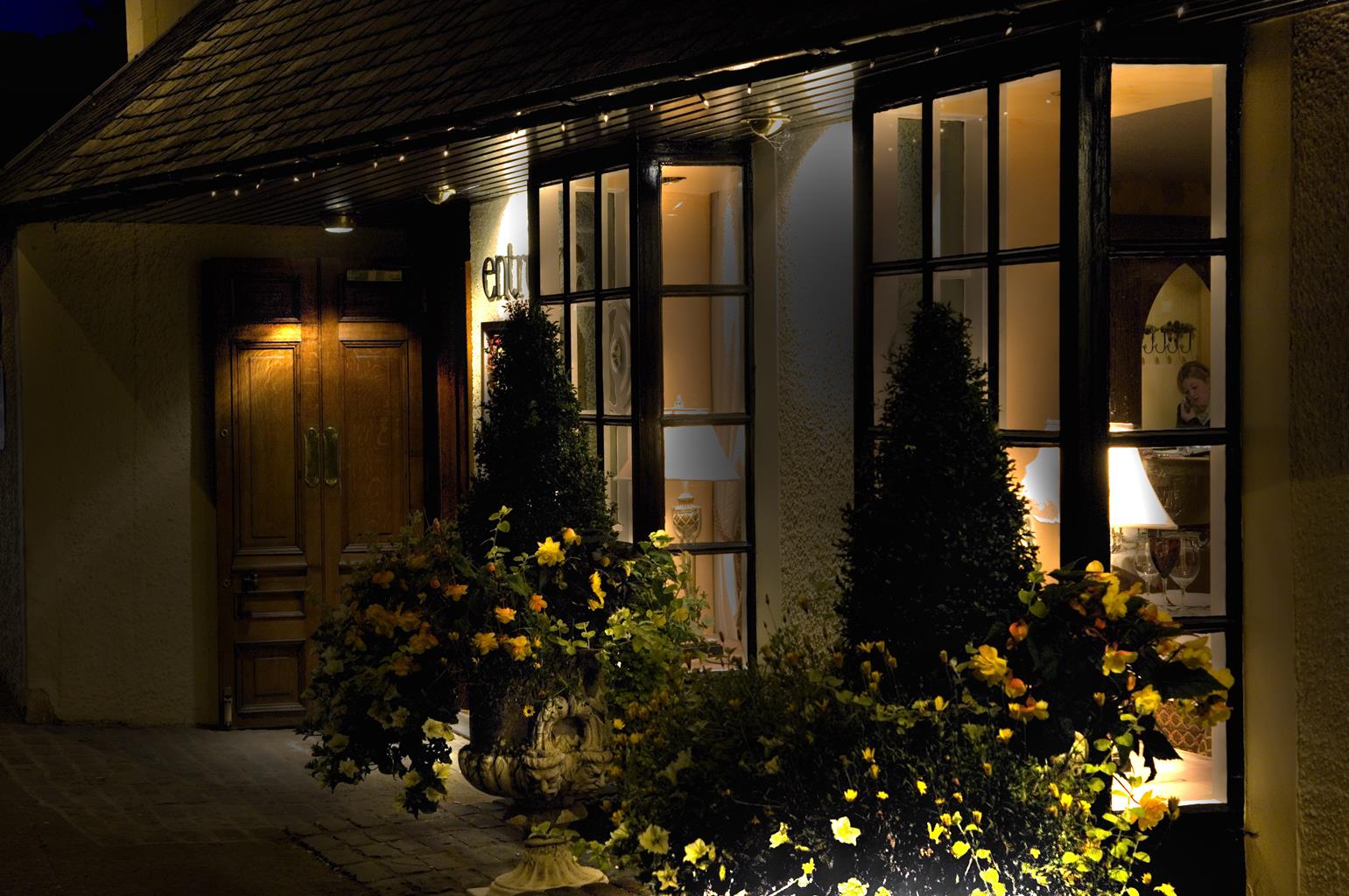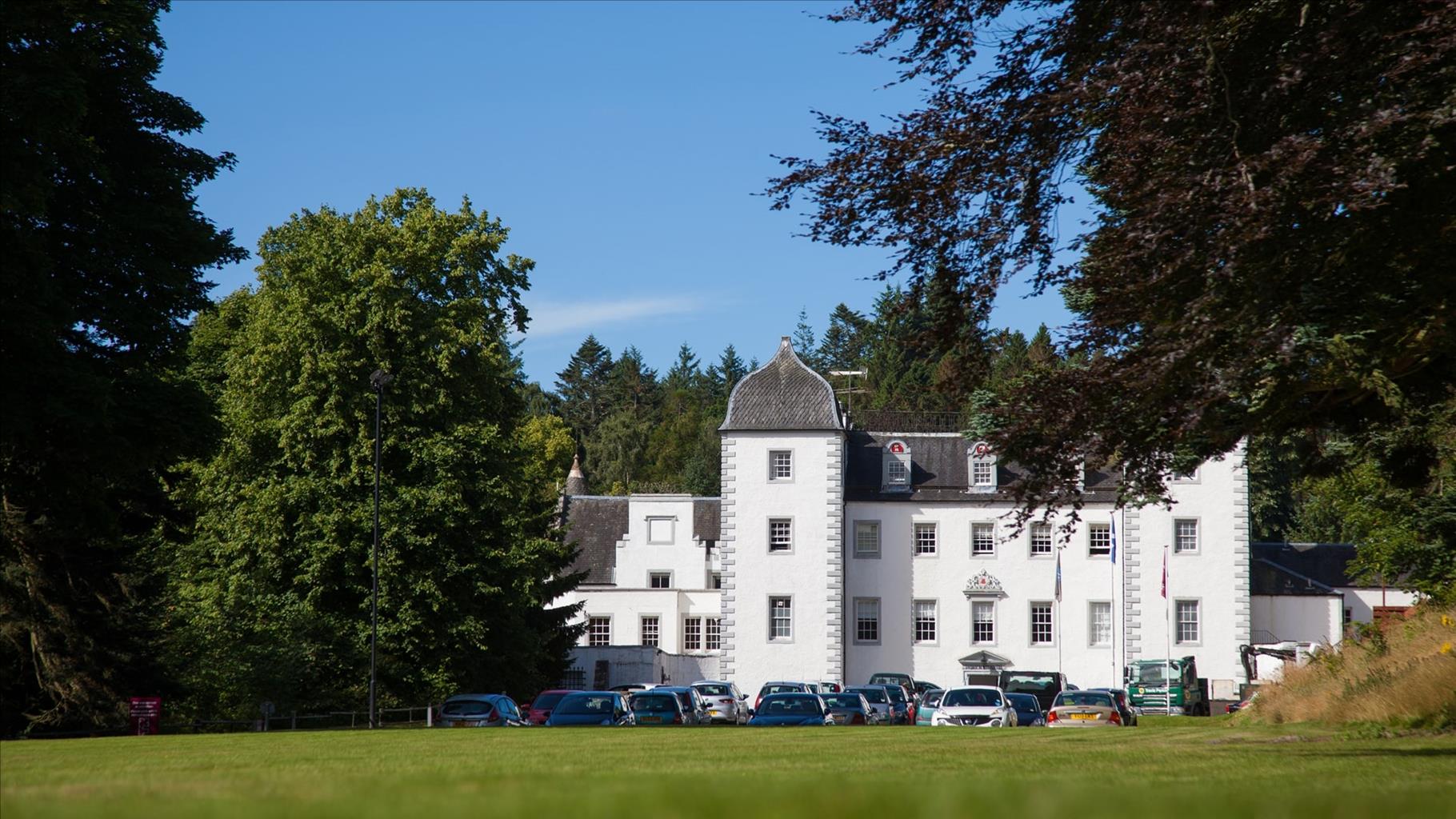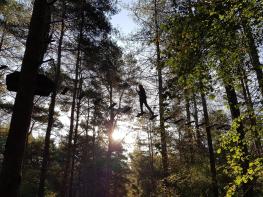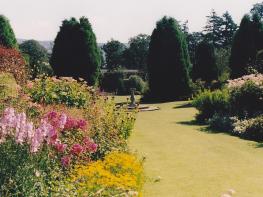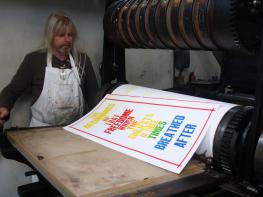The Tontine is a wonderful small hotel located between the high street and the River Tweed.…
From Peebles to Neidpath Castle and beyond

3.5 miles (5.7kms)
About the walk
Next time you're watching University Challenge, listening to Brain of Britain, or even taking part in your local pub quiz night, think for a moment about the person who has compiled the questions. They've almost certainly come up with some of them after referring to an encyclopedia. We tend to take these great tomes for granted, assuming that everything they say is correct, giving little thought to the people that produce them. This walk starts and finishes in Peebles – the birthplace of the Chambers brothers, the founding publishers of the famous Chambers' Encyclopaedia.
William, the older brother, was born in 1800 and in 1814 was apprenticed to a bookseller in Edinburgh. Robert, born in 1802, followed him to the city and in 1819 they set up in business as booksellers, then branched out into printing as well. They had a flair for the trade, and in 1832 William started Chambers' Edinburgh Journal, a publication to which Robert contributed many essays. It was a success and later that year the brothers established the publishing house W & R Chambers. Robert, who was the more literary of the two, continued to write in his spare time and in 1844 anonymously published a book with the less-than-catchy title Vestiges of the Natural History of Creation. It was a controversial work, dealing with issues that were then considered blasphemy. Charles Darwin later praised it, saying it had helped to prepare the ground for his book On the Origin of Species (1859).
An encyclopedia is born
The first edition of the Chambers' Encyclopaedia (1859–68) encompassed 10 volumes and was edited by Robert. It was based on a translation of a German work. Robert, who had become friendly with Sir Walter Scott, continued to write, producing books on a wide range of subjects including history, literature and geology. He also wrote a reference work entitled A Biographical Dictionary of Eminent Scotsmen (1832–4).
Although not as prolific as his brother, William also wrote a number of books, including a History of Peeblesshire, which came out in 1864. He never forgot his origins in Peebles and in 1859 he founded the Chambers Institution, which today houses the Tweeddale Museum and Gallery. It's on the High Street, and is worth visiting, if only for an enormous frieze – a copy of the Elgin marbles that were taken from the Parthenon in Athens.
When the brothers died, Robert in 1871 and William in 1883, the company was taken over by Robert's son. The name Chambers is still associated with scholarly reference works today.
Walk directions
From Kingsmeadows car park, turn right and cross the bridge. Turn left at the Bridge Inn and walk down the slope, past the swimming pool, to the river. Cross a small footbridge, go up some steps, turn left, descend steps and follow the riverside track to pass a metal bridge and a children's play area.
Continue following the obvious path and cross a little bridge over a burn, after which the path becomes more rugged. Enter the woods via a gate. Eventually you'll leave the woods and will come to the medieval, romantic-looking Neidpath Castle on the right-hand side.
From the castle, continue walking by the river to go through another gate. You'll soon come on to higher ground, with a great view of the old railway bridge spanning the water in front of you. After another kissing gate, maintain your direction to reach the red sandstone bridge.
Go up to the right of the bridge, so that you join the old railway line – maintain direction and continue following the Tweed Walk. Follow along this disused track until you find yourself at another attractive bridge – Manor Bridge.
Turn left here and cross the bridge, then take the turning on the left signed 'Tweed Walk'. You're now on a quiet lane that winds uphill – do stop and look behind you for classic views of the Borders landscape, with lush rolling hills and the broad River Tweed. Continue until you reach a track on the left that leads into the woods, opposite a picnic site.
Follow this path uphill, parallel to the road. Just before the path rejoins the road, continue down a wide, grassy path signposted to Peebles, with woodland to the left. Beyond a gate, the path runs through fields until you join an asphalt road.
Follow this road and turn left beyond the Southpark Garage into Southpark Industrial Estate, following signs to 'Riverside Path'. Walk between the units. Go down some steps and bear left when you reach the bottom. You'll soon reach a footbridge ahead of you.
Turn right here and follow the wide track beside the river. This is a popular part of the walk and attracts lots of families on sunny days. Continue walking past the weir, then go up the steps at the bridge and cross over to return to the car park.
Additional information
Waymarked riverside paths and metalled tracks
Rolling borderlands and Tweed Valley
Great, chance to swim in the river
AA Leisure Map 28 Edinburgh & The Pentland Hills
Kingsmeadows Road car park, Peebles
At car park
WALKING IN SAFETY
Read our tips to look after yourself and the environment when following this walk.
Find out more
Also in the area
About the area
Discover Scottish Borders
Southern Scotland is often referred to as the Lowlands, to distinguish it from the mountainous grandeur of the North-West Highlands. But don’t be fooled by the description. In places, the landscape can be anything but flat. This is a different Scotland to the rest of the country in terms of character and identity but, in terms of scenery, no less spectacular and just as fascinating.
Jedburgh, despite its turbulent history, is a peaceful country town beside the serpentine Jed Water, with only the abbey walls hinting at its former grandeur. One of the most elegant of the Border towns is Kelso, with its wide cobbled square at its heart. A poignant fragment is all that remains of Kelso Abbey, once the largest of the Border abbeys, destroyed by the English in 1545.
Like most towns and villages in the area, Melrose developed on the back of the tweed and knitwear industry, which brought wealth to the Scottish Borders, utilising the distinctive, Roman-nosed Cheviot Hill sheep and the availability of water power for the looms. Head to Peebles to shop for locally made knitwear and enjoy the peace and fresh air, where walks, trails and cycleways lead into the wooded countryside.
Nearby stays
Restaurants and Pubs
Nearby experiences
Recommended things to do
Why choose Rated Trips?
Your trusted guide to rated places across the UK
The best coverage
Discover more than 15,000 professionally rated places to stay, eat and visit from across the UK and Ireland.
Quality assured
Choose a place to stay safe in the knowledge that it has been expertly assessed by trained assessors.
Plan your next trip
Search by location or the type of place you're visiting to find your next ideal holiday experience.
Travel inspiration
Read our articles, city guides and recommended things to do for inspiration. We're here to help you explore the UK.


